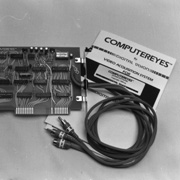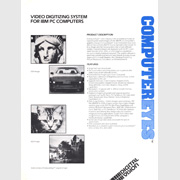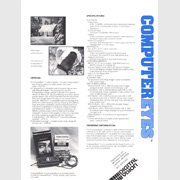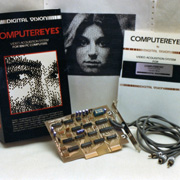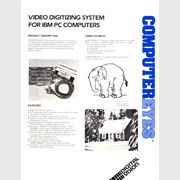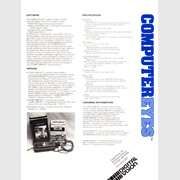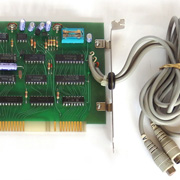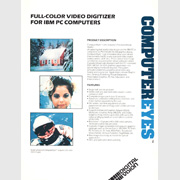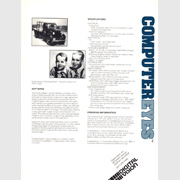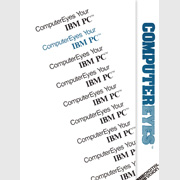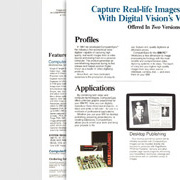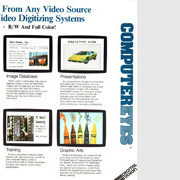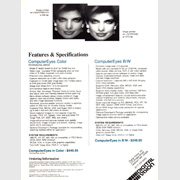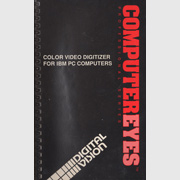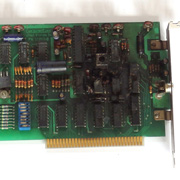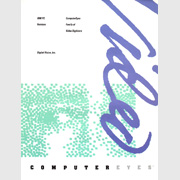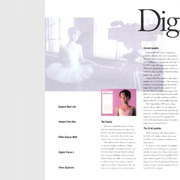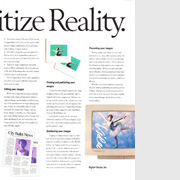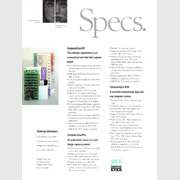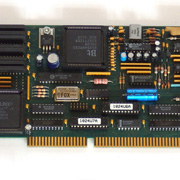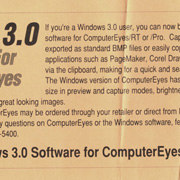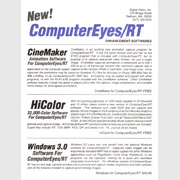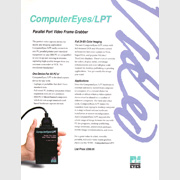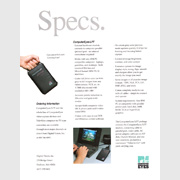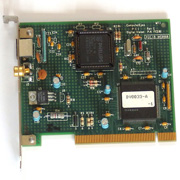|
ComputerEyes/PC
IBM PC & compatibles
It was inevitable. Whereas Apple Computer set the stage for the personal computer revolution, it was IBM that moved the idea from hobby status to full acceptance in all walks of life — science, business, education — everything. Initially, however, PCs were mainly thought of as business devices and most had poor graphics capabilities (or none at all).
But, with the advent of VGA graphics adapters, they became on a par with Apple's, Commodore's, and Atari's products. And, since it was IBM, many more were being sold into "serious" applications than the other manufacturers' computers. So it was a no-brainer that we'd develop a version of ComputerEyes for IBM PCs and compatibles. Fortunately, we knew a software engineer who could write code for the PC and knew real-time programming, so we hired him to handle that end.
Several more IBM PC ComputerEyes models were developed in subsequent years, with ever-increasing speed and image quality, and our PC ComputerEyes family outsold all the others. Here's the list:
- The first ComputerEyes for the PC was a monochrome slow-scan version, and it was an instant success.
- This was soon followed by ComputerEyes/Pro, a full-color slow-scan version, priced a little higher, that sold even better.
- Then came ComputerEyes/RT (for Real Time), our first true frame grabber. It captured images in 1/30 second into its own on-board memory. No more need to point the camera at a stationary object or pause the VCR!
- ComputerEyes/1024 was an enhanced frame grabber that captured images 1024 pixels wide, to provide even greater image quality for use with the newer high-resolution displays.
- Laptops and portable computers were starting to get popular, and these computers had no card slots to install any of our other ComputerEyes models. So we imported a video capture gadget from Taiwan that interfaced via the parallel printer (LPT) port, which all PCs had. We wrote a comprehensible manual and software for it, and even sold it with padded carrying pouch.
- The final version was ComputerEyes/PCI, which plugged into the newer PCs' fast PCI slot and used the latest digital video capture chips. It could capture moving video with good resolution and frame rates as well as high-quality still images.
|


